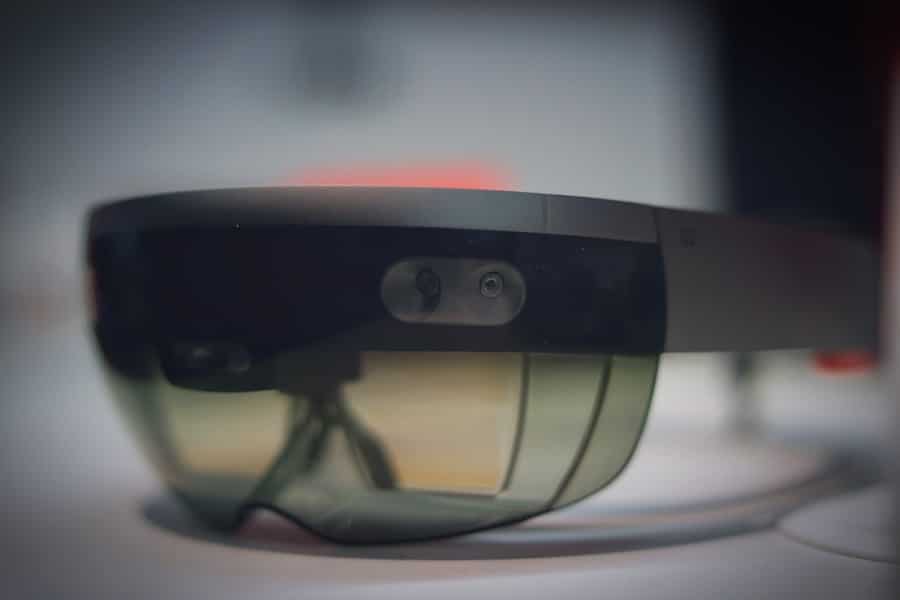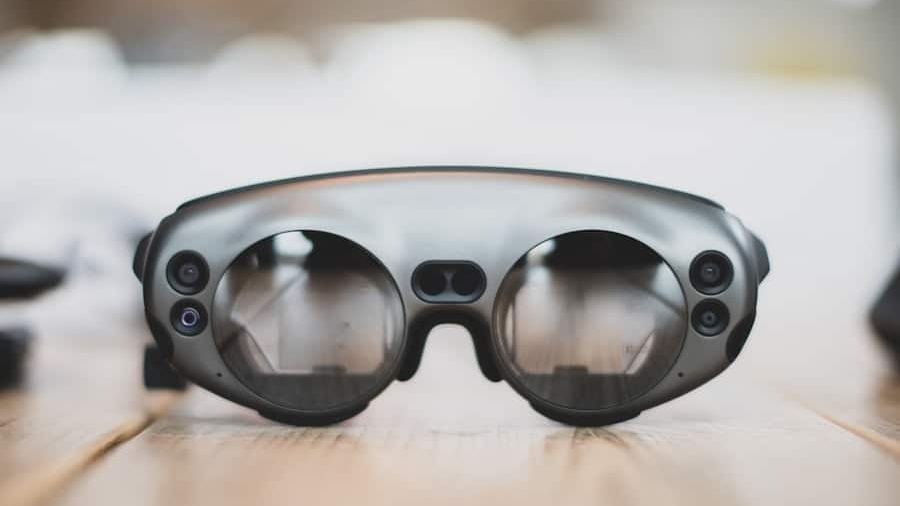Digital twins represent a revolutionary approach to modeling and simulating physical entities in a virtual environment. At its core, a digital twin is a digital replica of a physical object, system, or process that allows for real-time monitoring, analysis, and optimization. This concept has gained traction across various industries, including manufacturing, healthcare, urban planning, and aerospace, as organizations seek to leverage data-driven insights to enhance operational efficiency and decision-making.
The digital twin operates by integrating data from sensors embedded in the physical counterpart, creating a dynamic model that reflects its current state and behavior. The evolution of digital twins can be traced back to the early 2000s when the term was first coined by Dr. Michael Grieves at the University of Michigan.
Since then, advancements in Internet of Things (IoT) technology, cloud computing, and big data analytics have propelled the development of digital twins into mainstream applications. By utilizing real-time data streams, organizations can simulate various scenarios, predict outcomes, and conduct what-if analyses without the risks associated with physical experimentation. This capability not only enhances understanding but also facilitates proactive maintenance and operational improvements.
Key Takeaways
- Digital twins are virtual replicas of physical objects or systems that can be used for monitoring, analysis, and simulation.
- Augmented reality (AR) enhances the real world with digital information, while virtual reality (VR) creates a completely immersive digital environment.
- AR can be used to overlay digital information onto physical objects, while VR can create immersive simulations for training and testing digital twins.
- Using AR and VR in developing digital twins can lead to improved visualization, enhanced collaboration, and more efficient maintenance and operations.
- Challenges and limitations of AR and VR in digital twins include data integration, user acceptance, and the need for high-quality hardware and software.
The Role of Augmented Reality in Digital Twins
Enhancing Productivity and Collaboration
For instance, in manufacturing settings, AR can provide workers with real-time information about machinery performance or maintenance schedules by projecting relevant data directly onto the equipment they are working on. This immediate access to information can significantly reduce downtime and improve productivity. Moreover, AR enhances collaboration among teams by enabling remote experts to guide on-site personnel through complex tasks.
Accurate Task Execution
By using AR glasses or mobile devices, technicians can receive step-by-step instructions overlaid on their field of view, ensuring that they perform tasks accurately and efficiently. This capability is particularly valuable in industries such as aerospace and automotive manufacturing, where precision is critical.
Fostering Continuous Improvement
The integration of AR with digital twins not only streamlines operations but also fosters a culture of continuous improvement by allowing teams to visualize processes and identify areas for enhancement.
The Role of Virtual Reality in Digital Twins

Virtual reality (VR) complements the capabilities of digital twins by providing immersive experiences that allow users to interact with 3D models in a fully virtual environment. Unlike AR, which overlays digital content onto the real world, VR creates a completely simulated space where users can explore and manipulate digital twins as if they were interacting with the physical object itself. This immersive experience is particularly beneficial for training and simulation purposes, where users can practice skills or test scenarios without any real-world consequences.
In sectors such as healthcare, VR can be utilized to create realistic simulations for surgical training. Medical professionals can practice procedures on virtual patients that mimic real-life anatomy and physiological responses. This not only enhances their skills but also reduces the risk associated with training on actual patients.
Similarly, in architecture and construction, VR allows stakeholders to walk through virtual representations of buildings before they are constructed, enabling better design decisions and stakeholder engagement. The ability to visualize complex systems in a virtual space fosters innovation and creativity while minimizing costly errors.
Advantages of Using AR and VR in Developing Digital Twins
The integration of AR and VR technologies into the development of digital twins offers numerous advantages that enhance both operational efficiency and user experience. One significant benefit is improved visualization. By leveraging AR and VR, users can interact with complex data sets in a more intuitive manner, making it easier to understand intricate systems and processes.
This enhanced visualization aids in identifying patterns and anomalies that may not be immediately apparent through traditional data analysis methods. Additionally, AR and VR facilitate better training and onboarding processes. New employees can immerse themselves in realistic simulations that replicate their work environment, allowing them to gain hands-on experience without the risks associated with real-world operations.
This approach not only accelerates the learning curve but also boosts confidence among trainees as they become familiar with their roles in a safe setting. Furthermore, these technologies enable remote collaboration, allowing teams from different locations to work together seamlessly on projects involving digital twins. This capability is particularly valuable in today’s globalized workforce, where expertise may be distributed across various geographical locations.
Challenges and Limitations of AR and VR in Digital Twins
Despite the numerous advantages offered by AR and VR in the context of digital twins, several challenges and limitations must be addressed for widespread adoption. One primary concern is the high cost associated with implementing these technologies. Developing sophisticated AR and VR systems often requires significant investment in hardware, software, and training resources.
For smaller organizations or those operating on tight budgets, these costs can be prohibitive. Another challenge lies in the integration of AR and VR with existing systems and workflows. Organizations may face difficulties in aligning new technologies with legacy systems or ensuring compatibility across various platforms.
Additionally, there are concerns regarding data security and privacy when utilizing cloud-based solutions for digital twins. As organizations collect vast amounts of sensitive data from their physical assets, safeguarding this information becomes paramount to prevent breaches or misuse.
Case Studies: Successful Implementation of AR and VR in Digital Twins

Several organizations have successfully implemented AR and VR technologies within their digital twin initiatives, showcasing the transformative potential of these tools across various industries. One notable example is Siemens, which has integrated AR into its manufacturing processes through its Digital Twin concept. By using AR glasses, technicians can visualize assembly instructions overlaid on machinery components during production.
This approach has led to significant reductions in assembly time and errors while enhancing overall productivity. Another compelling case study is Boeing’s use of VR for aircraft assembly training. The aerospace giant has developed immersive training programs that allow new employees to practice assembly techniques in a virtual environment before working on actual aircraft.
Future Trends and Innovations in AR and VR for Digital Twins
As technology continues to evolve, the future of AR and VR in the realm of digital twins holds exciting possibilities. One emerging trend is the advancement of artificial intelligence (AI) integration within these technologies. AI algorithms can analyze data generated by digital twins to provide predictive insights and recommendations for optimization.
When combined with AR and VR interfaces, this could lead to more intelligent systems that adapt to user behavior and preferences in real time. Additionally, advancements in hardware technology are likely to enhance the user experience further. The development of lighter, more comfortable AR glasses and more immersive VR headsets will make these technologies more accessible to a broader audience.
Furthermore, as 5G networks become more widespread, the potential for real-time data streaming will enable even more sophisticated applications of digital twins powered by AR and VR.
The Impact of AR and VR on the Evolution of Digital Twins
The integration of augmented reality and virtual reality into the development of digital twins marks a significant evolution in how organizations approach modeling and simulation. By enhancing visualization capabilities, improving training processes, and facilitating remote collaboration, these technologies are transforming industries ranging from manufacturing to healthcare. While challenges remain regarding cost, integration, and data security, successful case studies demonstrate the tangible benefits that can be achieved through innovative applications of AR and VR.
As we look toward the future, ongoing advancements in AI, hardware technology, and connectivity will likely drive further innovations in this space. The potential for creating more intelligent, responsive digital twins will empower organizations to optimize operations like never before while fostering a culture of continuous improvement and innovation. The impact of AR and VR on digital twins is not merely a trend; it represents a fundamental shift in how we interact with technology to enhance our understanding of complex systems and processes.
A related article discussing the ambitious multimedia effort of The Verge can be found here. This article explores how The Verge is utilizing various forms of media to enhance their content and engage with their audience. Just like how AR and VR are supporting the development of digital twins, multimedia efforts like those of The Verge are pushing the boundaries of technology and innovation in the digital world.
FAQs
What are digital twins?
Digital twins are virtual representations of physical objects, processes, or systems. They are created using real-time data and simulations to mimic the behavior and characteristics of their physical counterparts.
How do AR and VR support the development of digital twins?
AR (Augmented Reality) and VR (Virtual Reality) technologies provide immersive and interactive experiences that can be used to visualize and interact with digital twins. They allow users to explore and manipulate digital twins in a more intuitive and realistic manner, leading to better understanding and decision-making.
What are the benefits of using AR and VR for digital twins?
Using AR and VR for digital twins can improve collaboration, training, and decision-making processes. It allows for remote access and visualization of complex systems, as well as the ability to simulate and test scenarios in a safe and controlled environment.
How are AR and VR integrated with digital twin technology?
AR and VR technologies can be integrated with digital twin platforms through software development kits (SDKs) and application programming interfaces (APIs). This integration allows for the visualization and interaction with digital twins in AR and VR environments.
What industries can benefit from the use of AR and VR for digital twins?
Various industries such as manufacturing, healthcare, construction, automotive, and aerospace can benefit from the use of AR and VR for digital twins. These technologies can be used for design, maintenance, training, and simulation purposes in these industries.

